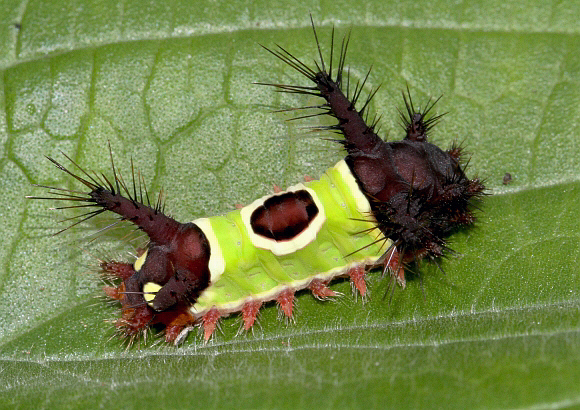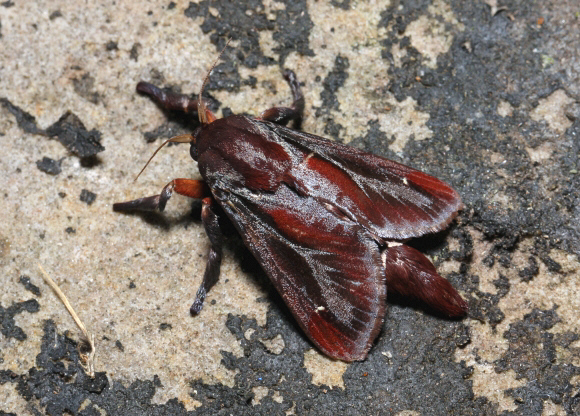
Sibine argentata, Tatama NP, Colombia – Adrian Hoskins
Introduction
The superfamily Zygaenoidea is represented in the neotropical region by the families Limacodidae, Megalopygidae, Dalceridae, Epipyropidae and Zygaenidae.
The Limacodidae is one of the most interesting of the Lepidopteran families. The adult moths have massive abdomens and huge thick finger-like legs. Freshly emerged adults have a shiny satin-like appearance and often exhibit rich purplish-red tones, but these tend to quickly fade to a dull brown.
The genus Sibine is comprised of 50 species, most of which are neotropical in distribution although one species stimulea has a range that extends into the southern states of the USA.
Sibine argentata is distributed from Panama to Brazil and Peru.
Habitats
This species inhabits subtropical and tropical forest at elevations between about 200-1800m.
Lifecycle
The eggs are thin, flat and transparent. They are laid in clusters on leaves of the foodplants which include a wide variety of trees and shrubs. Limacodid caterpillars are among the most extraordinary insects on the planet. Some, such as Phobetron are bright orange and have extremely long curved lateral protruberances each of which creates the illusion that it is an individual caterpillar rather than an appendage of a single one.
Sibine larvae are bright green with a large purplish ‘saddle’ ringed with white. The thoracic and anal segments are also purplish, and are armed with conical fleshy horns that bear tussocks of stinging hairs which can inflict severe pain. The larvae are flattened and their prolegs are reduced to form small suckers. Being unable to walk normally, they lay down a cushion of lubricant on which they glide slug-like along leaves.
The pupa is formed within a very hard cocoon, which has a circular escape hatch formed along a line of weakness. Prior to emergence the pupa stretches and forces the hatch open to allow the moth to escape.
Adult behaviour
During the daytime the adults rest on tree trunks or branches.

Sibine argentata, Satipo, Peru – Adrian Hoskins
